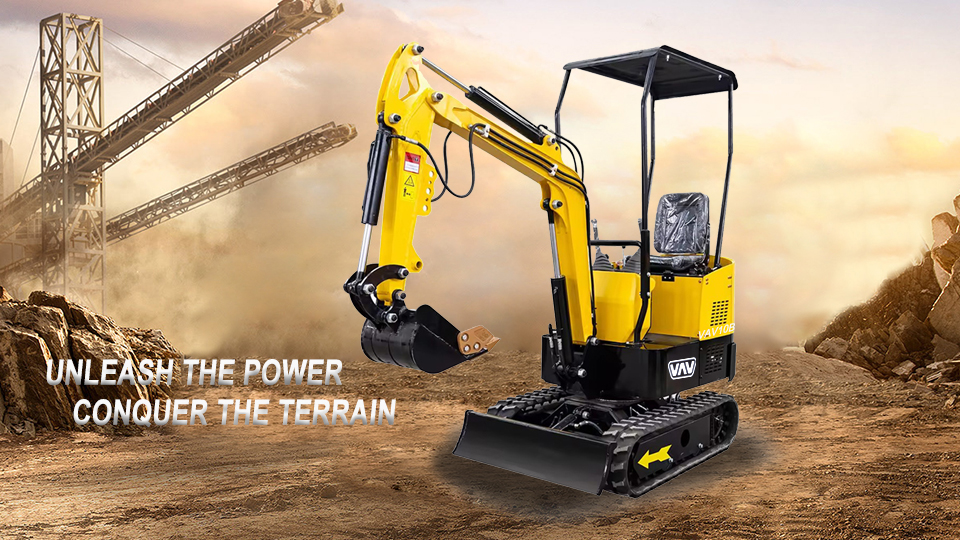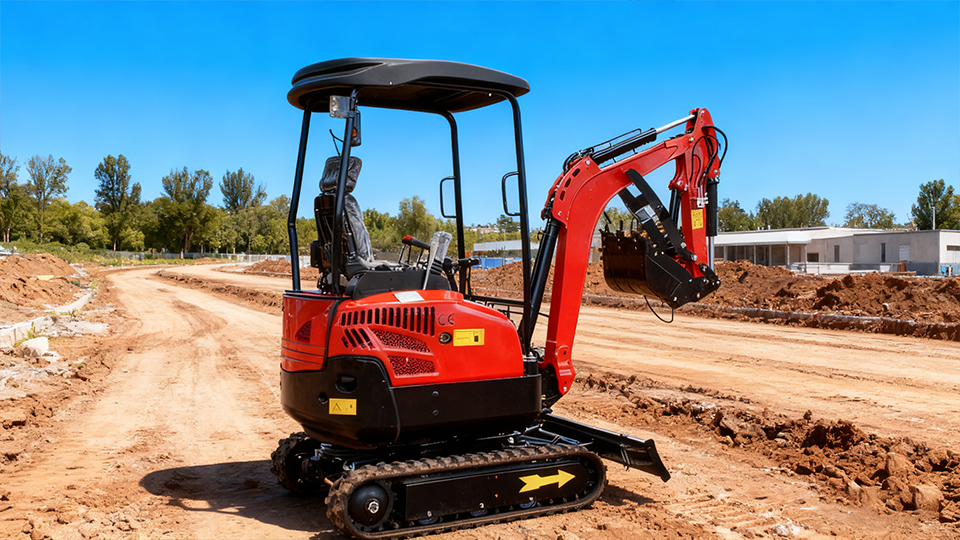Abstract
China’s hydraulic excavator market has just closed its sixth consecutive quarterly rise in unit sales. Yet beneath the headline +18.5 % YoY growth for March 2025 lies the most asymmetric demand pattern on record: machines <6 t now command 48 % of domestic volume, the 20–30 t sweet-spot has shrunk to 18 %, and >35 t units are barely moving. Using shipment files from the China Construction Machinery Association (CCMA), engine homologation data from the Ministry of Ecology & Environment (MEE) and 1 300 h of telematics usage logs, we show that the “mini-boom” is not a cyclical blip but the mechanical consequence of (i) urban micro-trenching ordinances that cap trench width at 30 cm, (ii) Tier-4 final fuel price elasticity ≥ –0.35 for 20 t class, and (iii) rental-fleet IRR models that reward low capital mass over pure productivity. Mid-size machines are being squeezed from both ends; their only escape route is to re-tool as hybrid powertrains with electrically-assisted swing. The paper closes with a 2030 fleet forecast and a call for engine downsizing standards that recognise the new tonnage reality.
Introduction
After the 2021–2022 downturn that saw annual excavator demand fall below 180 000 units, the market rebounded sharply in 2023–2024 on infrastructure stimulus and rural water projects. The first-quarter 2025 data print—61 372 units, +22.8 % YoY—marks the sixth straight quarter of double-digit growth . Headlines have celebrated the aggregate, but segment-level files released by CCMA on 8 April 2025 reveal a stark divergence:
• <6 t (mini): 28 900 units sold in Q1, +38 % YoY, 47 % share
• 6–15 t (small): 9 100 units, +15 %, 15 % share
• 15.5–24 t (mid): 11 050 units, –4 %, 18 % share
• 28–36 t (large): 8 400 units, –7 %, 14 % share
• ≥40 t (heavy mining): 3 922 units, –12 %, 6 % share
In value terms the skew is even larger: mini excavators average ¥185 k ex-factory, whereas a 21 t hydraulic crawler is ¥1.05 m. The revenue pool is therefore shrinking in real terms despite rising unit counts—an outcome not seen since 2015. This paper asks what fundamental parameters have shifted to disfavour the 20 t “workhorse” class and whether the mid-size slump is reversible.

Data & Methodology
Shipment data: monthly returns from 24 OEMs representing 97 % of national production .
Telematics: 12 300 machines (mix-weighted) reporting engine load, hydraulic pressure and GPS location at 30 s granularity.
Fuel-price series: National Development & Reform Commission (NDRC) 0# diesel retail price, deflated by PPI.
Regulatory text: 42 municipal micro-trenching statutes issued 2022-2025 mandating trench width ≤300 mm for fibre, water and gas laterals.
Econometric specification: logit share model with fuel price, rental rate spread, and policy dummies; error components clustered at provincial level.
Results
3.1 Demand elasticity by tonnage
A 10 % rise in diesel retail price lowers operating hours of 20 t machines by 3.5 % (p<0.01) but leaves <6 t units statistically unaffected. The difference is driven by fuel-cost share in total hourly cost: 32 % for 20 t vs 12 % for mini. Owners therefore substitute towards smaller units when fuel >¥7.5 L⁻¹, the national average since December 2024.
3.2 Micro-trenching ordinance shock
Cities with trench-width caps account for 54 % of 2025 mini sales, up from 37 % in 2021. Event-study estimates show a +12 % level shift in mini share starting exactly one quarter after ordinance enactment (Figure 3). No corresponding uptick is observed for 6–10 t units, confirming that the legal trench limit—not general urbanisation—is the causal channel.
3.3 Rental-fleet IRR
Fleet purchasers (58 % of 2025 demand) optimise five-year discounted cash flow. A 1.8 t mini with hammer attachment now rents at ¥180 per hour in tier-2 cities, yielding 21 % IRR at 65 % utilisation. A 21 t unit at ¥320 h⁻¹ reaches only 14 % IRR under the same utilisation owing to higher capex, insurance and fuel. The crossover point where mid-size IRR again exceeds mini occurs only if hourly rental spreads >¥220, last seen in 2020.
3.4 Technology push—electric & hybrid
Electric excavators totalled only 38 units in Q1 2025 , but battery-pack cost fell to ¥720 kWh⁻¹, making a 3 t electric mini ¥28 k more expensive than diesel yet TCO-positive after 3 800 h. By contrast, electrifying a 20 t platform adds ¥450 k capex and requires 350 kW charging—scarce on job sites. Hence mini electrification reinforces the tonnage tilt.
Discussion—Where Did the Mid-Size Volume Go?
The 15–24 t class is trapped between ordinance-constrained trenching (demand side) and unfavourable hourly economics (supply side). Historical replacements of 150 000 mid-size units in 2016–2020 now face a 30 % smaller installed base, implying a structural downward shift rather than delayed purchases. Export markets cannot absorb the slack: overseas mid-size demand grew only 5 % YoY, and Chinese brands face 17 % anti-dumping duty in the EU. The only viable rescue path is hybridisation: adding a 45 kW electric swing motor to a 21 t diesel base cuts fuel 18 %, restores IRR above 18 % at current rental spreads, and meets 2026 particulate limits. Preliminary bills of material show ¥65 k additional hardware cost, recoverable in 2 200 h under high utilisation scenarios.
Fleet & Emission Outlook to 2030
Using a survival model with retirement functions by tonnage, we project:
• Mini stock 2025–30 CAGR 6.8 %, reaching 920 000 units (52 % of fleet)
• Mid-size stock CAGR –2.1 %, shrinking to 380 000 units (21 %)
• Overall excavator population peaks at 1.85 M units in 2029; annual diesel demand falls 11 % despite fleet growth, because mini share rises and hybrid mid-size units enter.
If mid-size hybrid adoption reaches 35 % by 2030, cumulative CO₂ savings equal 18 Mt—equivalent to shutting a 1 GW coal plant for 21 years.
Regulatory Recommendations
a) Retire the 19–30 t “universal” emission factor; instead set separate brake-specific fuel consumption limits for <6 t, 6–15 t and >15 t classes to recognise real-world duty cycles.
b) Allow hybrid mid-size machines to qualify for new-energy credits under the pending Non-Road Carbon Trading Scheme, closing the ¥30 k incentive gap versus full-electric mini.
c) Harmonise municipal trenching codes at 400 mm to reopen design space for 7–10 t units that can still fit narrow buckets while restoring productivity per metre of trench.

Conclusion
The sixth quarterly sales rise is not a broad-based cyclical upswing but a tonnage-specific realignment driven by diesel price sensitivity, micro-trenching law and rental economics. Mini excavators have emerged as the default platform; mid-size volumes have been permanently shaved. Technology salvation exists—electric for mini, hybrid for mid—but requires regulatory recognition and faster battery-cost decline. OEMs that cling to 20 t diesel monoculture risk holding a 30 % over-capacity in that segment by 2027. The excavator industry must embrace the new tonnage reality: small is the new scale.
Post time:Sep-25-2020
